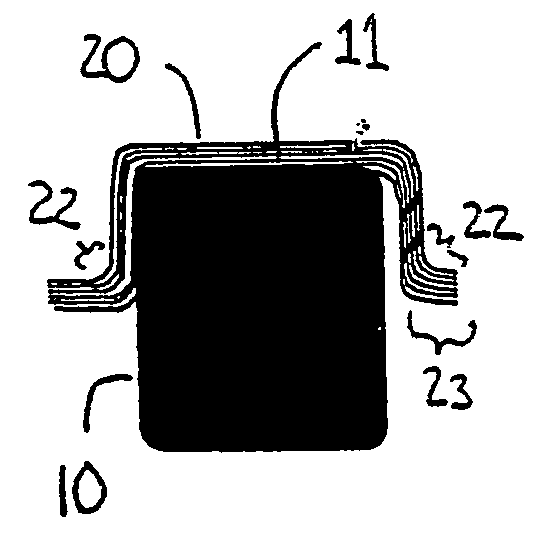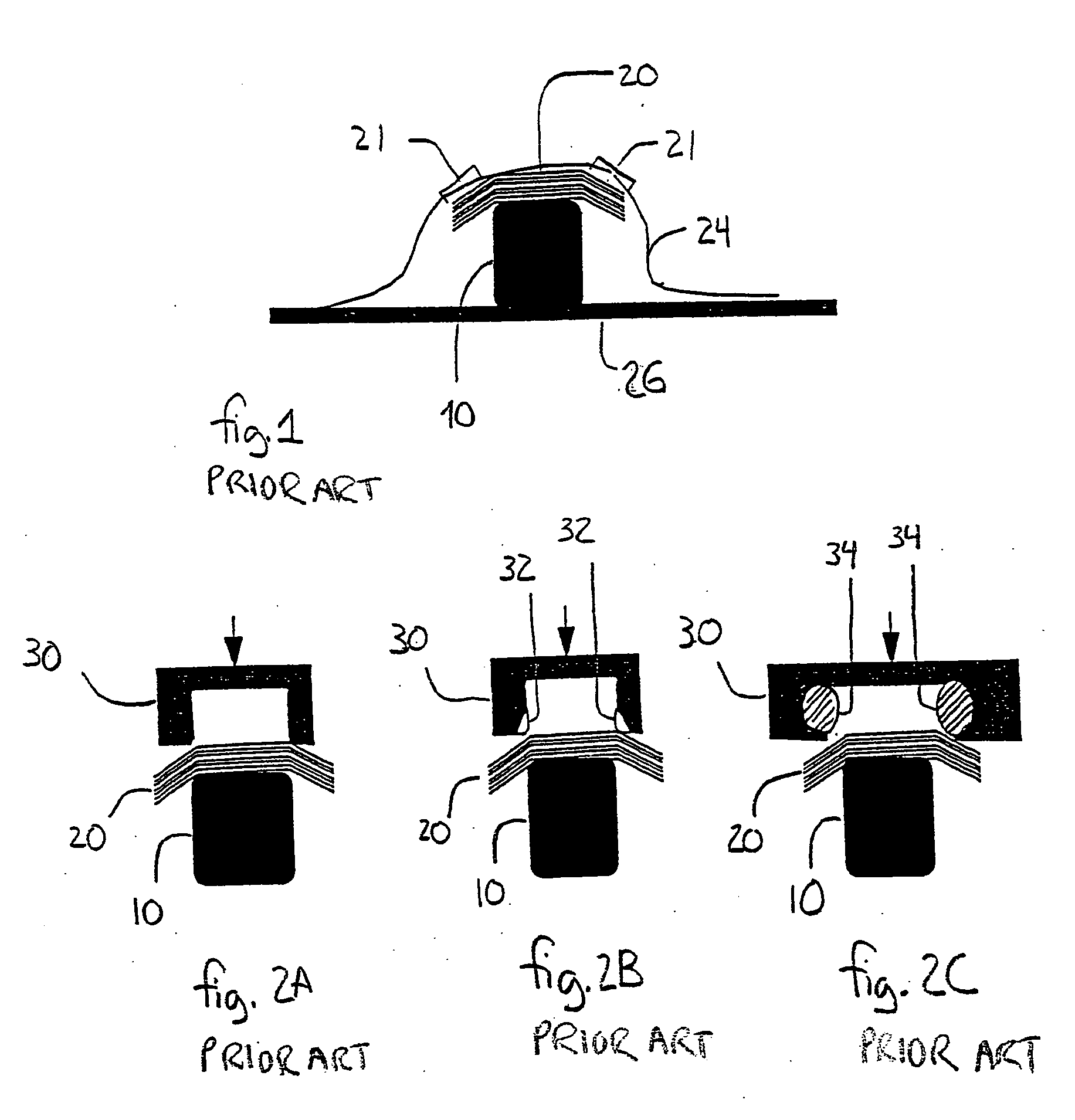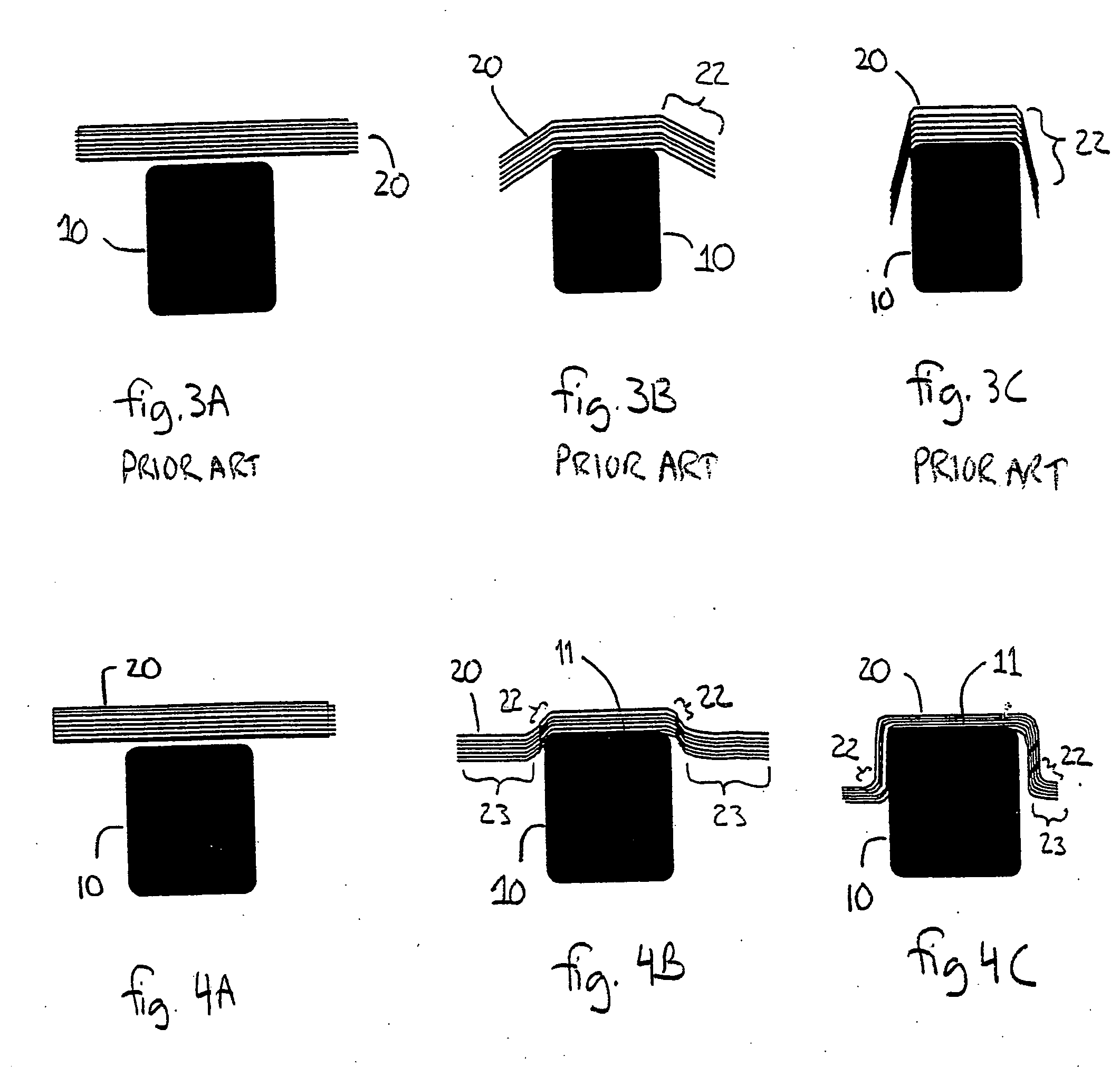Forming method for composites
a composite material and forming method technology, applied in dough shaping, manufacturing tools, food shaping, etc., can solve the problems of large amount of hand labor for forming complex contoured composite structures, limited success of methods on very thick laminates or more complex shapes, and inability to meet the needs of complex shapes and complex shapes. , to achieve the effect of reducing or eliminating out-of-plane fiber buckling and minimizing the shear zon
- Summary
- Abstract
- Description
- Claims
- Application Information
AI Technical Summary
Benefits of technology
Problems solved by technology
Method used
Image
Examples
Embodiment Construction
[0026] By way of overview, a method for forming composite materials is provided. A composite charge wider than a first surface of a mandrel is positioned across the first surface of the mandrel. The portion of the composite charge overhanging the first surface of the mandrel is supported and urged against the mandrel while the unbent portion of the composite charge is supported substantially parallel to the first surface of the mandrel. The invention also provides a system for forming composite materials. A compression mold of forming bladders and heater plates forms a composite charge over a mandrel and supports the unbent portions of the composite charge during forming substantially parallel to the upper surface of the mandrel. The present invention thus minimizes the shear zone where plies in the composite laminate charge slide past one another during the forming process thereby reducing or eliminating out-of-plane fiber buckling.
[0027]FIGS. 4A, 4B, and 4C are progressive cross-...
PUM
| Property | Measurement | Unit |
|---|---|---|
| angle | aaaaa | aaaaa |
| angle | aaaaa | aaaaa |
| temperature | aaaaa | aaaaa |
Abstract
Description
Claims
Application Information
 Login to View More
Login to View More - R&D
- Intellectual Property
- Life Sciences
- Materials
- Tech Scout
- Unparalleled Data Quality
- Higher Quality Content
- 60% Fewer Hallucinations
Browse by: Latest US Patents, China's latest patents, Technical Efficacy Thesaurus, Application Domain, Technology Topic, Popular Technical Reports.
© 2025 PatSnap. All rights reserved.Legal|Privacy policy|Modern Slavery Act Transparency Statement|Sitemap|About US| Contact US: help@patsnap.com



